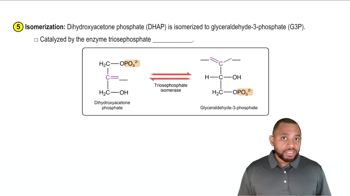Draw the skeletal structure for each of the following compounds:
(a) 3-ethylhexane
 Verified step by step guidance
Verified step by step guidance



Draw the skeletal structure for each of the following compounds:
(a) 3-ethylhexane
Give the correct IUPAC name for each of the following compounds:
(a) <IMAGE>
Give the correct IUPAC name for each of the following compounds:
(c) <IMAGE>
Determine the relationship between each of the pairs of the following compounds. Are they structural isomers (different molecules), conformational isomers (the same molecule), or not related?
(b) <IMAGE> and <IMAGE>
Determine the relationship between each of the pairs of the following compounds. Are they structural isomers (different molecules), conformational isomers (the same molecule), or not related?
(a) <IMAGE> and <IMAGE>
Determine the relationship between each of the pairs of the following compounds. Are they structural isomers (different molecules), conformational isomers (the same molecule), or not related?
(d) <IMAGE> and <IMAGE>